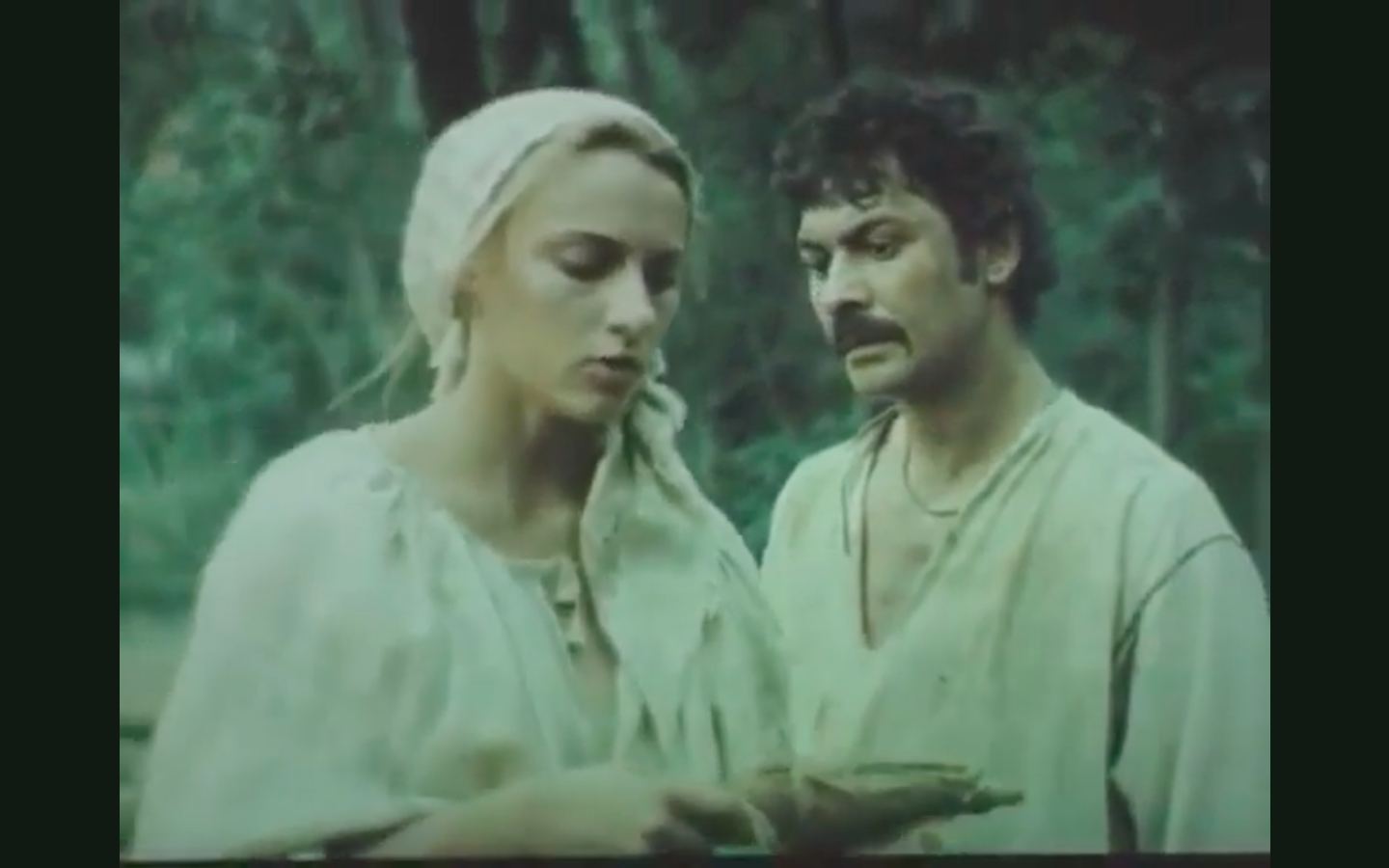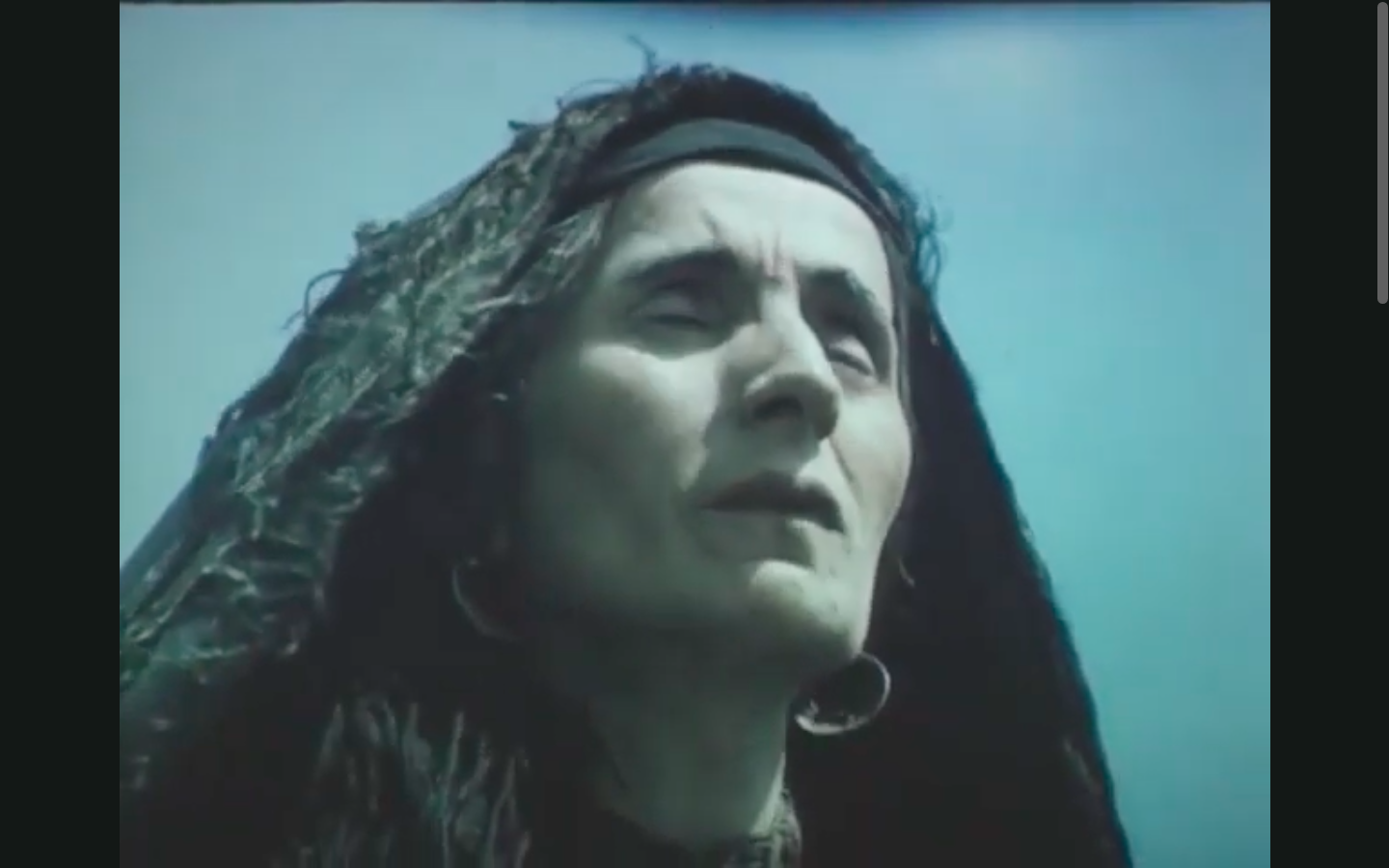«What for?» The Tragedy of an Individual and of an Entire Nation in the Gypsy Aza movie
We tend to say that Romanis are depicted in a caricature, rough, and stereotyped manner in movies. Some movies, however, allow us to see how the prejudiced attitude is also reflected upon the community wherein they dwell. Case in point: the Gypsy Aza movie.
Let us begin with a disclaimer. The word Gypsy will only be used here for the purposes of quoting what the film characters say. After all, the events are set in the 20th century when no one cared about tolerant vocabulary. Nowadays, usage of such vocabulary is out of question. The ethnic group so designated is the Romani or the Roma people. Usage of any other terms shall be deemed offensive and negative.
What is the Gypsy Aza movie about?
So, the Gypsy Aza. Right in the very first scene, we observe one of the main problems: the total non-acceptance of Romanis by the community, the banishment of an entire settlement. Later, we shall be able to see that such decisions are usually driven by subjective, unjustified issues. Particularly, the fact that the young Romani beauty has refused to have intimate relations with a wealthy landowner at whose lands the encampment has been deployed. After all, for the wealthy squire, Aza is but a thing that can be used and abused.

Even good deeds by the Romanis are not trusted by society and give birth to a lot of superstitions. How about water wells with bloody water in them? All due to the fact that it was a Romani that has dug out the well. This is the kind of magic vibes Romanis are associated with in society.
One may suppose that this kind of mystic thinking is related to the ‘other-ness’, to the difference between ethnic groups. That might be true, although there must be plenty of points of understanding, too, as one follows the traditions such as respect towards one’s elders, the striving to set up a family etc…
All of the above, though, is cancelled by the stinging «Go away, you horse-thief!». That is exactly how the local resident addresses Vasyl, the Romani, once he sees Vasyl next to a horse. Quite enough to charge a person, name him a criminal, is it not? No, it is not.
The entire plot is built upon the love story of Vasyl and Aza, the Romani girl, and Vasyl and Halia, the Ukrainian girl. This love triangle is depicted via the prism of social moods both in the Ukrainian and in the Romani communities.
Love feelings between Halia and Vasyl are being frowned upon by either community. The father of the Ukrainian girl says that «it is better to marry a man who does not love you than to marry a Gypsy» and calls his daughter a «Gypsy whore». He is so repulsed by the thought of his daughter being in a relationship with a Romani that he suffers a heart attack. Vasyl’s family treats the idea of their son marrying a Ukrainian girl in an equally furious manner. His mother disavows her son and curses him. The entire encampment is shocked by Vasyl’s decision. So we have drama in both worlds, so to say. To disobey your parents is unacceptable; to violate the established customs is a taboo.
That said, the couple eventually get married. But the wedding is not attended by any of Halia’s acquaintances from the village. An old lady walking by does not even greet them; instead, she showers the couple with curses: «Ye sinners! Be ye damned. There will be no happiness in your family».

Notwithstanding the circumstances, Vasyl does still believe that he would be able to change the attitude of the environment. After all, he is a skilful smith. So, he sets up his own smithery. But the society rejects his services in the same manner it rejects him. Next, they burn the smithery to the ground.
So, what were Vasyl and Halyna bullied for? It is totally unclear
Now, I, as a modern-day viewer, am faced with the same question Vasyl and Halia were. What for? Now, seriously. For you, Halia is an amazing girl, a good lady of the house, a polite daughter. Why not just accept her choice?
Vasyl is a peaceful resident in his village; he abides by the customs and traditions. Is the stigma that has been applied for a long time ago more important than the real, actual picture? I do understand that times were different then, that the reality was different. I cannot accept that reality, though. This attitude was a punishment not so much for Vasyl but for Halia: a girl just like you, a girl you could be proud of and whom you could admire. The position of a women at that time is a topic for another conversation. Not only was she a woman but a Romani woman. Double stigmatisation was well-rooted…
Let us move to the next question. Apparently, such rejection by the village forces, Vasyl to remind of how good it was back at the encampment—where he was understood and respected. Thus, Vasyl the Romani develops a nostalgia for the olden days. The situation exacerbates once the encampment returns to the village, and Vasyl sees Aza, his old love interest, once again. He then returns to the encampment and begs his mother for forgiveness.
Now, get the entire amount of your emotions together. As we have plenty of questions to the authors (the film was based upon a play by Mykhailo Starytskyi) and the director.
Vasyl abandons Halia, now pregnant with his baby. Aza tells Vasyl’s lawful wife that Vasyl would henceforth be living with Aza. Halia gives birth to a baby and dies in childbirth. And then Vasyl blames Aza for the death of his beloved one. And then the young Romani girl, desperate, throws herself off a rock.
Vasyl remains alone, with his newborn son. He lives as a hermit, digs wells to make a dime and to atone for his sins (as per one of Halia’s beliefs). And then, once upon a time when Vasyl is digging for water, the encampment chief approaches the pitch and starts throwing earth on Vasyl. This process is silently observed by Vasyl’s mother. Yes, his own mother is watching her son being buried alive.
Now let us have a moment for lyrical deliberations and rhetorical questions. What for? This is a question many people have after each scene, after each dialogue.
Everyone seems to be a victim in this story. But who is to blame?
A dissociated personality is a painful thing. Two worlds, Vasyl’s two beloved ones. Could it all have been different if the village had accepted the marriage of Vasyl and Halia? It could indeed have. This could have been a win-win situation. A happy couple. A community enjoying a talented smith. And minus 1 prejudice: a Romani does not mean a thief.
Could Vasyl have been happy, had he not decided to try to live with Halia? Quite possibly. There would have been no humiliation, no bullying, no passive aggressive ignoring; he would not have watched his beloved one wither without him. Could the encampment have forgive and allow Vasyl just raise his own son? That, too, might have been possible. The social dogmas, however, have turned out to be more important for the people than acceptance, understanding, and humanity. As a result of that, everyone has become unhappy. And, as far as the child is concerned, we can only suppose what would happen to it.

Everyone seems to be a victim in this story. So, who is to blame? Is it the society that banned the «other-ness». That love triangle has highlighted almost all the issues of inter-ethnic communication of those times. That said, Romanis are depicted quite nicely in the said film. Yes, they are indeed nomads. But they are making money by performing, playing music and singing. They do have jobs. They are talented smiths. Yes, they are indeed engaged in panhandling and fortune-telling. But they have moral convictions, too. For instance, Aza rejects the squire’s sexual advances as she is saving herself for marriage. Respect towards one’s elders is cherished—although it is being elevated to the degree of a cult of unquestioned obedience.
Overall, the movie is very emotional and quite painful. It is not just about the oppressed situation in which Romanis found themselves; it is about the pettiness of opinions, by and large. To disavow your children, to reject your close ones, to not accept the choice of others, to throw empty charges, to resort to vengeance…
One should, of course, consider the historical context wherein events are taking place. The magical thinking, the superstitions, the bias, the stereotypes, the strict social mores—all of those were ‘default settings’, so to say. Unfortunately, these ‘default settings’ were far from positive. Still, a lot of opinions and convictions of those times have since ceased being valid and seem downright absurd nowadays. So maybe let us bid farewell to false perceptions of the Romani community, too, shall we?
Back to the movie. Both the romantic and the social plot force us to empathise, to think; both plots raise questions. And the main question is: What for?
Photo by: Screenshots from the movie
See also
- «Невидимі. Стійкість: минуле і сучасність ромів». Як зрозуміти історію ромів через візуальну культу
- Альфреда Марковська: історія життя і порятунку інших
- «Дивись і не забувай»: 15 років Dikh He Na Bister у Кракові
- ФОТОРЕПОРТАЖ: У Києві відкрили виставку про ромську історію та ідентичність
- «Відновлення пам'яті – роми у Варшавському гетто». Історична екскурсія у Варшаві
- PHOTO REPORT: Events commemorating the victims of the Roma genocide in Babyn Yar
- 2 серпня — Міжнародний день памʼяті жертв геноциду ромів
- Коли допомога — це більше, ніж ваучер
- Антициганізм поруч: як розпізнати упередження у звичних словах і жартах
- Стереотип замість культури: як TikTok спрощує ромську ідентичність